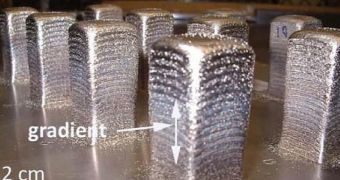Technically speaking, selective laser sintering technology isn't necessarily exclusive to metal 3D printing, but metal powders are, nonetheless, the most common material used by them. It seems these printers are now becoming affordable.
Selective laser sintering 3D printers aren't usually called 3D printers. Instead, they are referred to as additive manufacturing robots and assembly lines.
After all, due to their complexity and price, they have only been used in mass production of various objects, devices, and device parts. SLS printers are particularly popular in the aerospace and automotive industries because of that.
Still, it's not fun to have to pay several tens of thousands or hundreds of thousands of dollars for a single machine, even if that machine can create objects several feet in width and height.
That is why everyone should feel free to breathe a sigh of relief later this year, when most patents covering Selective Laser Sintering 3D printing technology are set to expire.
Patents basically mean that someone in the world owns a certain technology or idea, and if you want to use it in a product you need to persuade them to let you, usually by paying them licensing fees.
With the patents expiring, this won't factor in the final prices. Thus, we can expect more SLS 3D printers to sell for less than a hundred grand. A lot less.
Indeed, we've already seen SLS printers with a price of $27,000 / €20,300, and there is a crowd funding campaign for a model that only costs $8,300 / €8,300.
Sure, it's not nearly as low a price range as that boasted by FDM printers (fused deposition modeling), but it's not like FDM printing can do anything with metal. They use plastic and other malleable substances like that.
Same for SLA 3D printing (stereolithography). It may have a high level of detail, but it can only “grow” things by curing fluid resin with bright light.
The dropping price of metal 3D printers means that even smaller, independent inventors and gadgeteers will be able to afford them if they save money hard enough. Even if consumers don't buy one of the things, you can be sure that 3D printing stores and online services will, if they haven't already, so you'll be able to make do with building the 3D virtual CAD model and sending the file to them to be printed for a fee.
In the meantime, prices will only get lower, until SLS printers ship for truly affordable prices. Probably in five years or so.

 14 DAY TRIAL //
14 DAY TRIAL //